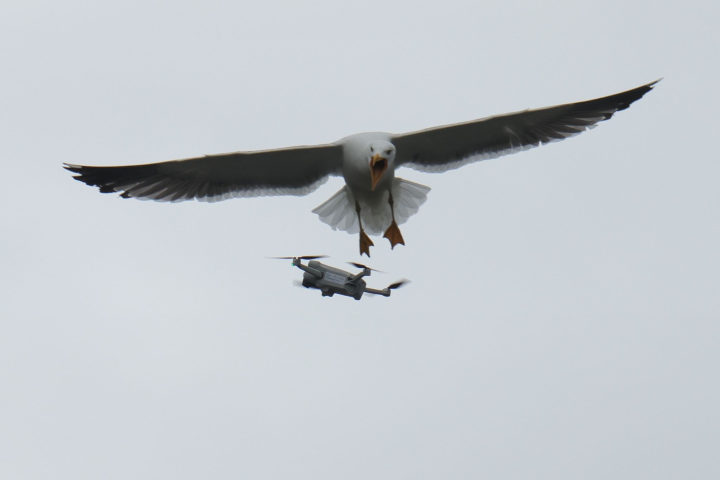Disturbing Drones
Reports

On Friday 14 June I was walking along the road in Kildonan with a local resident. The cordoned off area established by local people working together was providing much needed sanctuary for shore nesting birds. It was being respected by other shore users including responsible dog owners with their dogs on leads. Suddenly the calm scene was shattered. All the nesting birds were in the air with their piercing alarm calls. They were in pursuit of a flying intruder. A drone. The drone had triggered the same response as a crow or a raptor flying too close, and the nesting birds were trying to chase off the drone. Of course, unlike another bird, the drone was not scared off. The operator whom we could not see did not immediately take the drone out of the area. I was horrified. The nests and young were abandoned on the shore exposing them to danger from real predators while the adult birds were trying to drive off the drone.
My companion said that it was not the first time this had happened. On a previous occasion he had spoken with a drone operator. The operator said that he had a license. My companion pointed out that he did not have a license to break the law.
Police and wildlife experts are becoming "increasingly concerned" at the number of cases of protected wildlife being disturbed by drones. They say some drones are being flown dangerously close to breeding birds and animals at sites in Scotland. Examples include seals being chased into the sea at protected haul-out sites and cliff nesting birds being panicked and plummeting into the sea.
The Partnership for Action Against Wildlife Crime (PAW) Scotland said it is important drone operators understand the law. The increasing popularity in the use of recreational drones creates potential conflict through encounters with Scotland’s wild birds and animals.
A spokesperson, from the UK National Wildlife Crime Unit, said: "Breeding wild birds, dolphins, whales and seals are all protected from harassment or disturbance by law that currently imposes fines up to £5,000 or imprisonment for up to six months on those who break it. Irrespective of whether the offender is an egg collector, boat skipper or drone operator, the possible sentences are the same.”
The Civil Aviation Authority (CAA) is responsible for overseeing the use of drones in Scotland, and has set out a series of rules and guidelines to ensure the safety of everyone on the ground and in the air. Click here for information on Drone Laws Scotland | Drone Regulations [Updated 2024]
The CAA drone code includes; avoid likely bird breeding sites and recognise that disturbance is any change in the normal behaviour of a bird or animal.
Wild birds and animals are vulnerable to disturbance during the breeding season and particularly when they have dependent young, therefore the law affords protection during these times. The active nests of all wild birds are legally protected from damage and destruction and anything that would prevent them being used. Drone operators should be aware of the risks in operating drones in the vicinity of wild birds and animals, take steps to minimise any likely impacts and know what to do in the event of an encounter.
If you suspect an offence has been committed relating to the use of drones and wild birds, animals or any other form of wildlife crime, report it as soon as possible to Police Scotland on 101.
( Photograph by Michael Cuthbert)